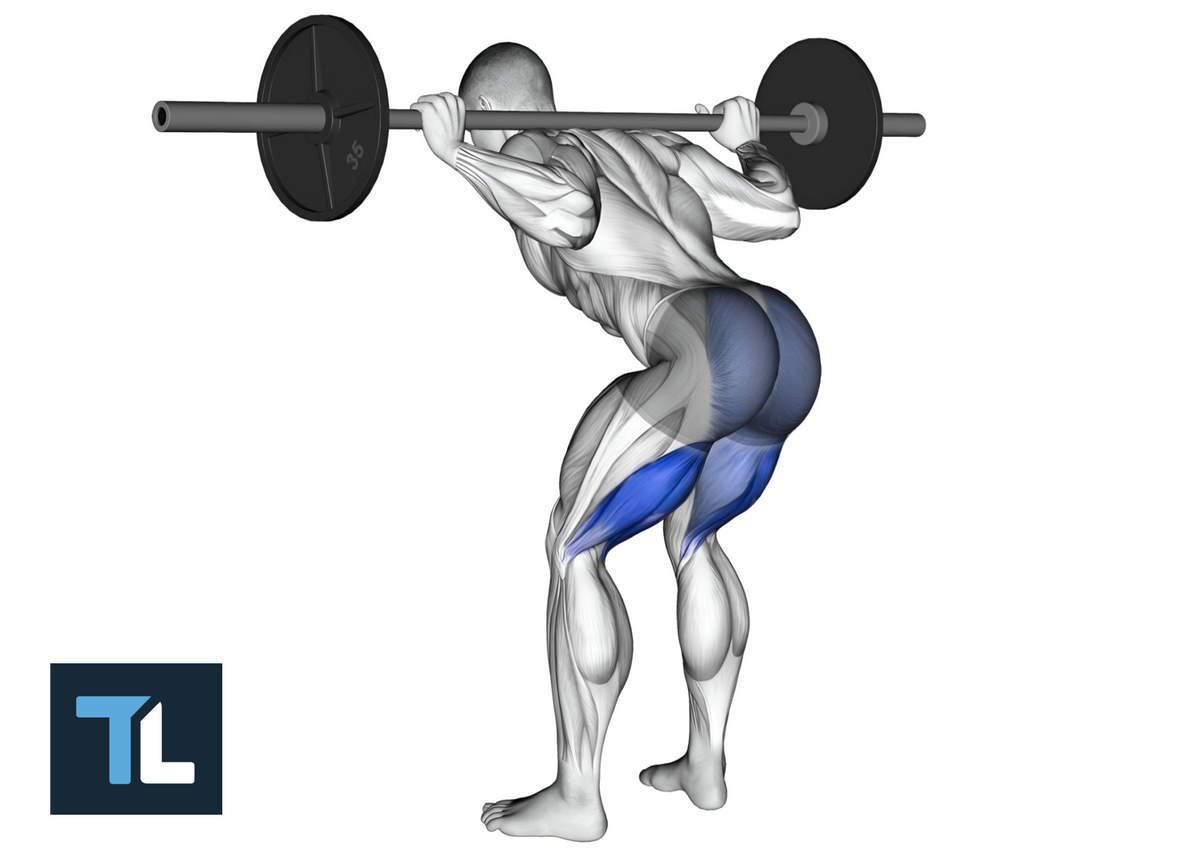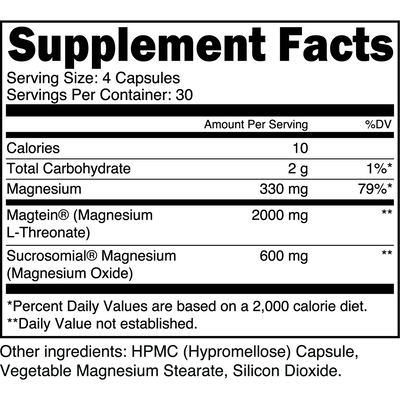The Good-Morning Exercise: Build Your Posterior Chain Muscles

What’s the Good-Morning Exercise All About?
Posterior chain exercises are a fundamental part of our physical health that contributes to our strength, power, balance, and posture. Though we can’t really “see” these muscles as often since they are, well, along the backside of our bodies, they require regular strengthening to help optimize their function and reduce injury risk.
Since many of us spend most of our days sitting during school or work, we are more likely to turn off these posterior chain muscles. Over time, this can lead to muscle weakness or imbalance. The "good morning" is a popular hip-hinge exercise many lifters use to help activate and strengthen these muscles and keep them in healthy, working condition.
Read on to learn more about good mornings, their benefits, how to properly execute this lift, and some common mistakes to avoid along the way.
What Are Good Mornings?
The good morning is a great exercise that activates a number of muscle groups along the backside of your body. Though the setup of this exercise is similar to that of a barbell back squat, the mechanics and muscle recruitment are very different.
Good mornings require a fair amount of stability and core strength to help you lean forward until your torso is parallel to the floor all while keeping the barbell secure on the upper aspect of the back. From this position, the contraction phase requires greater hamstring, glute, and upper back muscle activation making it one of the best exercises for any posterior chain workout routine [1].
Good Morning Benefits
For those who are looking to build muscle mass, improve hip mobility, or strengthen your posterior chain, the good morning exercise will get you there!
Here are three important benefits of good mornings.
1. Improved functional strength
Good mornings are a great “assistance” exercise that increases your functional strength and mobility. This is especially beneficial for laying down the foundation for other exercises such as deadlifts, back squats, or bent-over rows since these movements use many of the same muscle groups as the good morning lift.
2. Increased posterior chain strength
Using proper form, good mornings emphasize hamstring activation caused by lengthening and increased range of motion during the down phase of this lift. For individuals who tend to be more quad dominant, this exercise is an excellent option not only to improve posterior chain strength but more specifically to target and build stronger hamstrings.
Good mornings also target upper and lower back muscles to help increase strength, stability, and positional awareness which are all necessary for injury prevention.
3. Better hip mobility
The good morning exercise can help improve your hip mobility to help you lift heavier, prevent injury, boost power, and improve overall athletic performance. With practice and increased hamstring flexibility, you’ll experience even greater hip mobility gains from this exercise.
Muscle Groups Involved
The primary muscles used during a good morning exercise include the hamstrings, glutes, erector spinae, and back extensor muscles. To help stabilize the core during the down phase of the hip hinge, several secondary muscles such as the abductors, abdominals, and deep back muscles (i.e. multifidus, semispinalis, etc.) help the body maintain balance throughout the movement pattern.
Seated vs. Standing Good Morning

Although the traditional barbell good morning exercise is performed while standing upright, you can also try this exercise in a seated position.
Performing good mornings while seated places greater emphasis on the lower back and traps since sitting will deactivate the glutes and hamstring muscles. As a result, less muscle recruitment makes it more difficult to lift heavy weights during the seated good morning when compared to the standing good morning.
How to Perform the Good Morning with Excellent Form
As mentioned earlier, the setup for the good morning exercise is very similar to that of a barbell back squat. However, the movement pattern is more similar to that of a deadlift.
Here’s how to execute a good morning lift with proper form:
-
Stand tall with your feet shoulder-width apart and knees slightly bent
-
Place a barbell onto your upper back so that the bar rests just on top of the trap muscles closest to your shoulders
-
Brace your upper back and core by taking a deep breath into your lower belly and creating tension on your weightlifting belt (if applicable)
-
Begin the descending movement by hinging your body down, sending your hips backward and maintaining upper back extension as your chest comes forward
-
Stop the descending movement once your upper body is parallel (or close to parallel) to the floor
-
In this position, your hamstrings should be fully elongated with only a slight bend in your knees
-
Begin the ascending movement by extending your hips forward and driving your upper body up and back, keeping your shoulder blades retracted to help stabilize the bar as you return back to the starting position
Common Mistakes When Doing the Good Morning Exercise
It’s important to consider some of the most common mistakes that people often make when performing good mornings to help you prevent injury down the road.
Mistake #1: Bending your knees or torso too much
Since this exercise relies more on hamstring activation, bending too much at the knees will shut off this activation and switch to using more quads. Though you may still “feel the burn”, it’s not the purpose of this exercise.
Another common error that can be dangerous for the back is by bending at the torso rather than hinging at the hips. Keeping a neutral spine position is essential to preventing low back injury while also helping to transfer the weight appropriately across your posterior chain muscles.
Mistake #2: Lacking upper-body stiffness/rigidity
Another common mistake is neglecting to stiffen the upper back to support the weight of the bar throughout the exercise. Without having a “rigid back” to keep the bar in place as you descend into position, you’ll experience shifting or sliding of the barbell up or down your back which can impact the lift and put you at risk for a low back injury.
One way to help build functional strength is by practicing resistance band good mornings. This exercise gives you the chance to develop greater back stability and enhance your muscular capacity to help you progress to performing weighted barbell good mornings with correct form.
Mistake #3: Not getting low enough
Achieving the proper good morning depth to fully activate the glutes and hamstrings is essential to helping you gain strength, power, and mobility through the posterior muscles. Rather than adding too much weight, it’s helpful to use the metal sides of a squat rack as a guide to help you achieve more depth. This can also provide you with a “safety cap” on your range of motion.
Make it a "Good Morning" Next Time You Hit the Gym
Good mornings are a very popular exercise that helps build posterior muscle strength, improve hip mobility, and prevent injuries. Whether you prefer seated or standing, using a weighted barbell or resistance band, this exercise is inclusive of all training styles and fitness levels.









